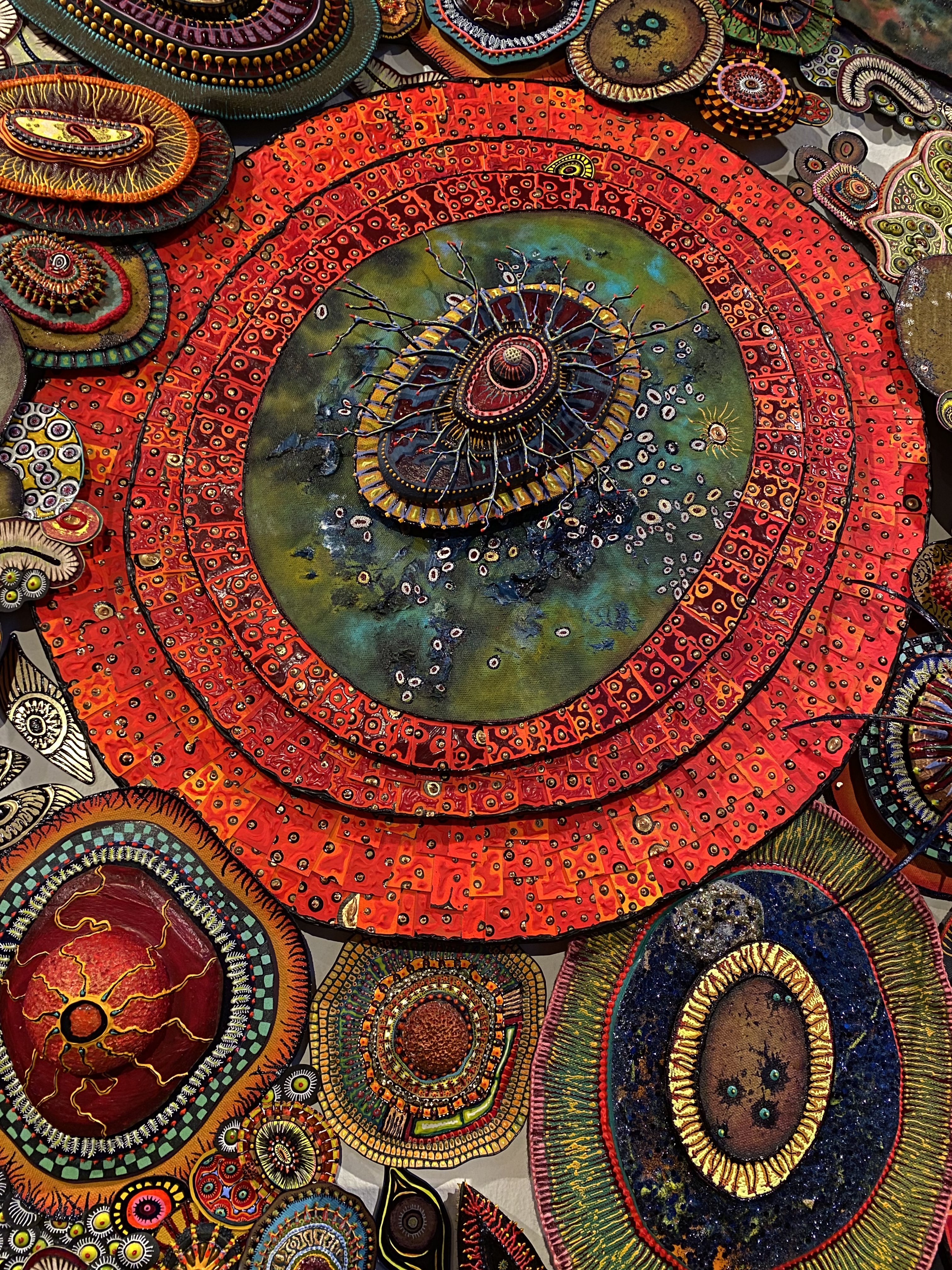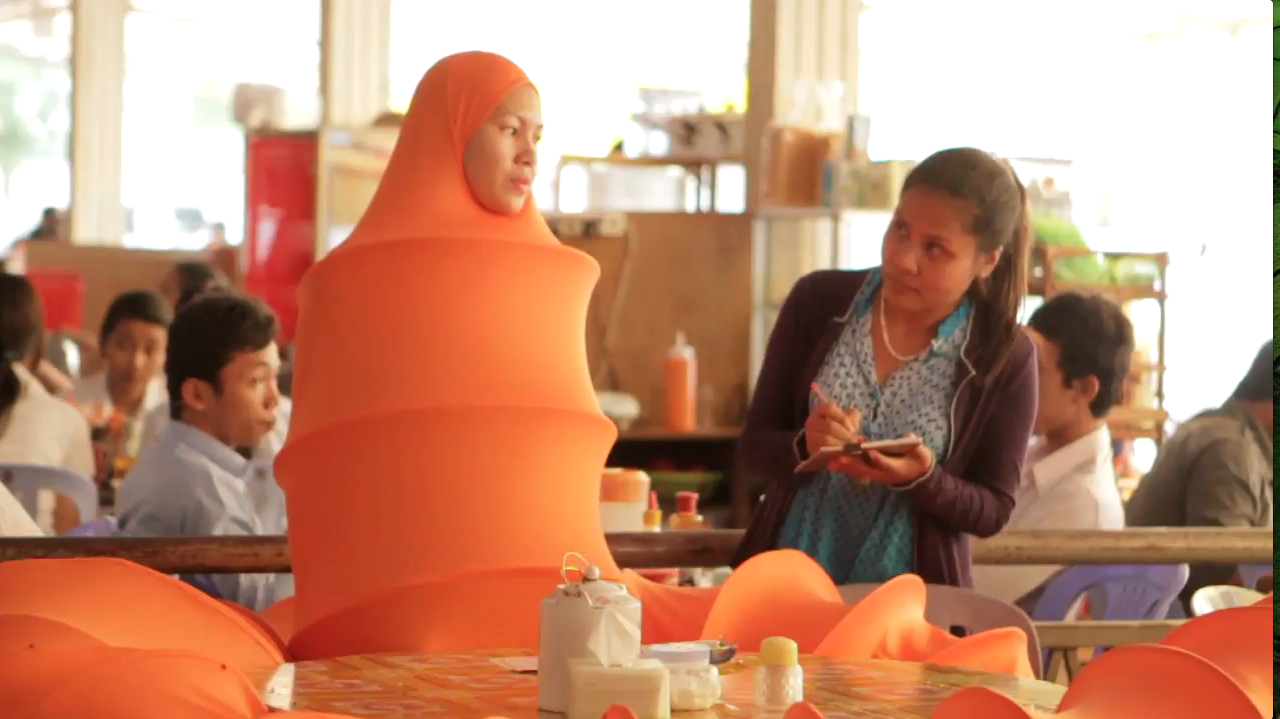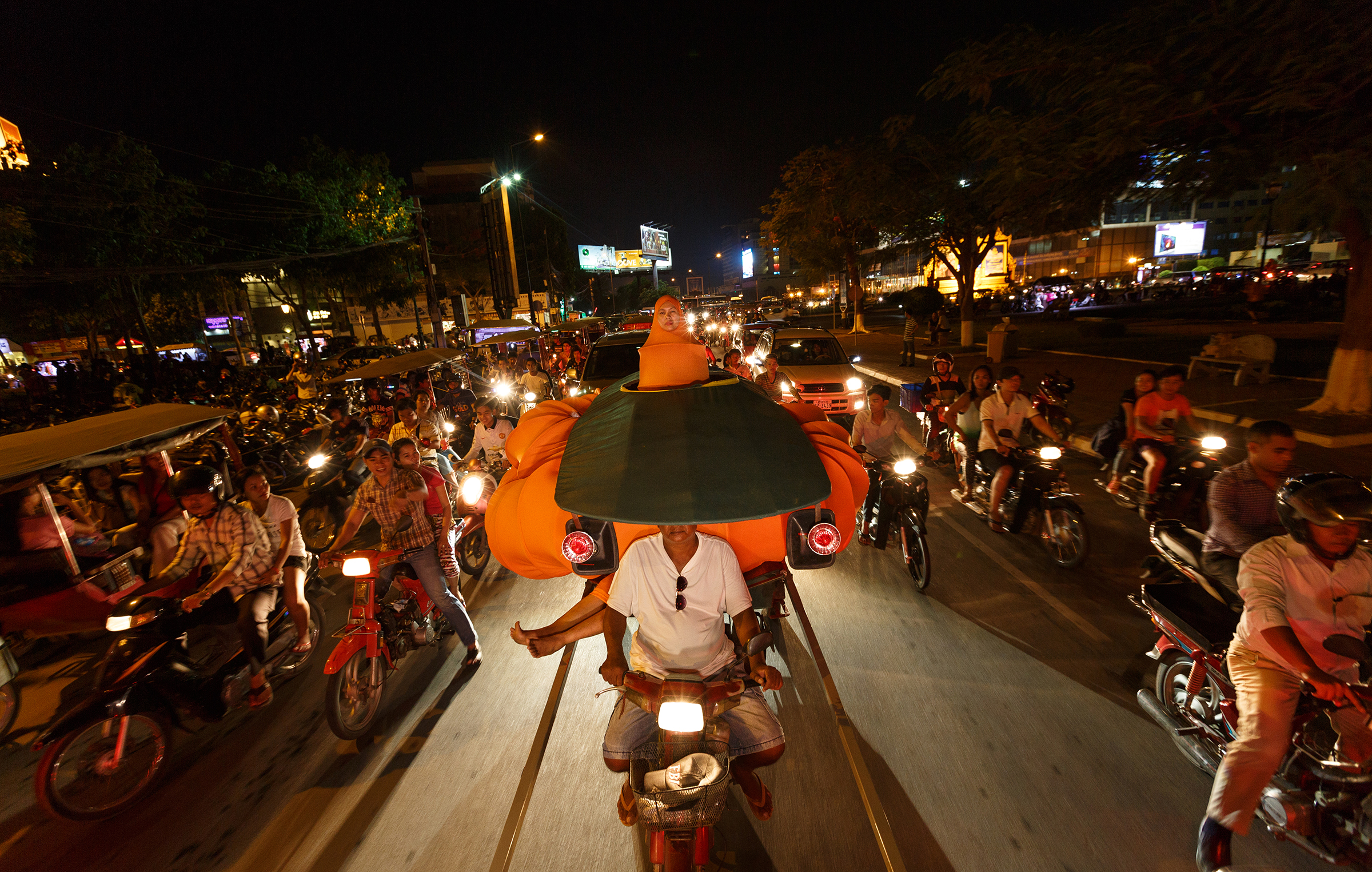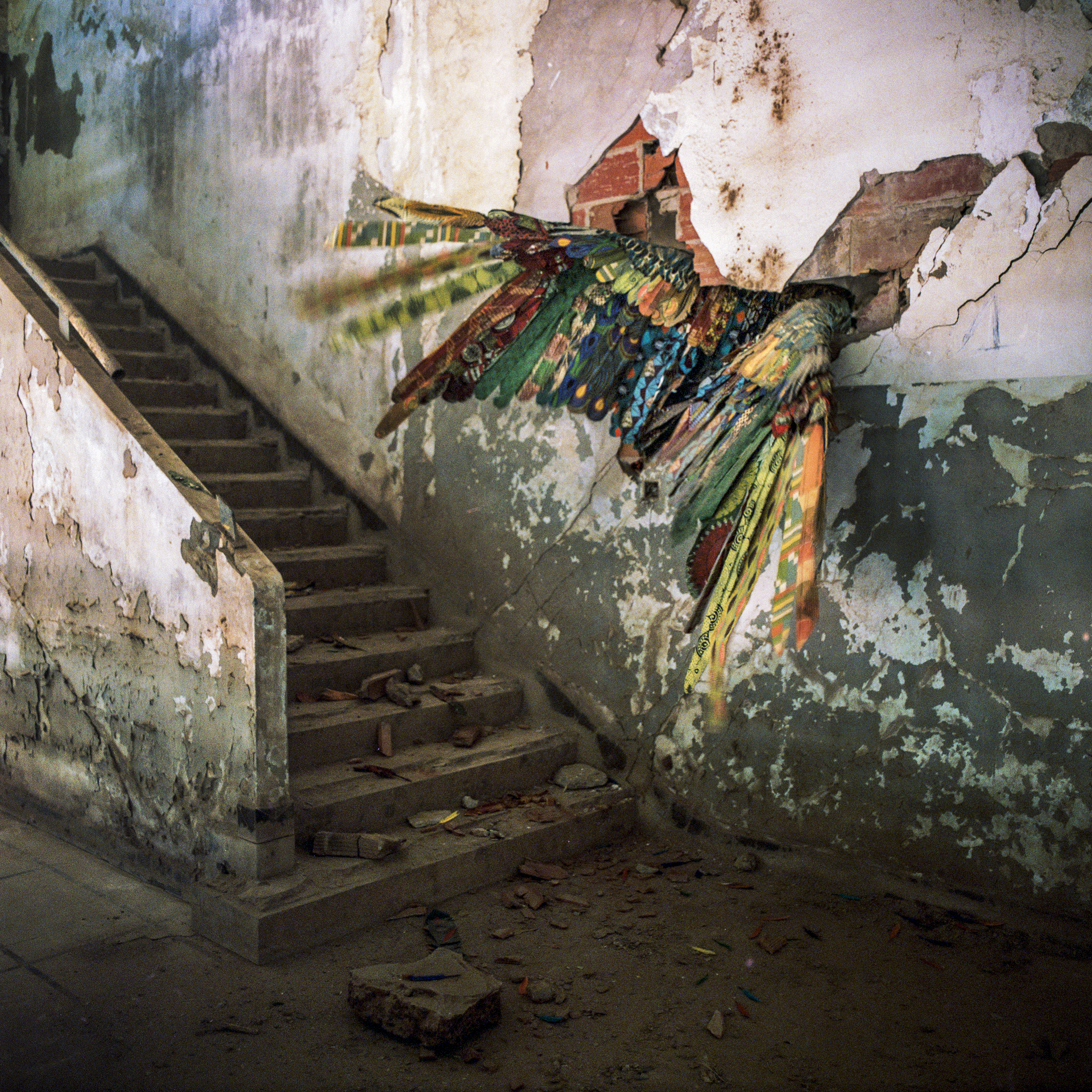We’ve Arrived at the End. Or Is it Just the Beginning?
Harlan Ellison’s monster, AM, uses its power to torture the last humans. The protagonist, Ted, must kill his companions in order to set them free and assert control over AM: “Here. Living under the land, under the sea, in the belly of AM, whom we created because our time was badly spent and we must have known unconsciously that he could do it better.”1 Once the monster has formed, once it has been released, is that it? Does it linger like plastic, a material that can be melted down and reformed, but never actually breaks down and disappears? Will these monsters be recycled into new forms of devastation—perhaps a form that is sneaky, initially unrecognizable, like plastic bottles that are transformed into shoes or blankets? What I hope is that if we take ownership over the monster, if we acknowledge the damage it has done, perhaps we can make it work for good. Perhaps we do not have to simply succumb to the fate of Ellison’s protagonist.
Perhaps the most quoted part of Barbara Tuchman’s The March of Folly is its opening passage: “a phenomenon noticeable throughout history regardless of place or period is the pursuit by governments of policies contrary to their own interests. Mankind, it seems, makes a poorer performance of government than of almost any other human activity…Why do holders of high office so often act contrary to the way reason points and enlightened self-interest suggests? Why does intelligent mental process seem so often not to function?”2 The study examines leaders who fight against reason for the sake of profit. “Why,” she asks, “does American business insist on ‘growth’ when it is demonstrably using up the three basics of life on our planet—land, water and unpolluted air?”3 This madness was explained in a study by neuroscience professor Sukhvinder Obhi, which “found that power impairs our mirror-neurological activity — the neurological function that indicates the ability to understand and associate with others.”4 This incidence is coined by British politician David Owen in his 2012 book The Hubris Syndrome as a condition “of the possession of power…”5 This is not a disorder one is born with, but one that “manifests itself in leaders only when in power.”6 The universality of the problem is laid out inauspiciously by Tuchman: “Folly’s appearance is independent of era or locality; it is timeless and universal, although the habits and beliefs of a particular time and place determine the form it takes. It is unrelated to the type of regime: monarchy, oligarchy and democracy produce it equally. Nor is it peculiar to nation or class.”7
Within this exhibition, Amie Esslinger has provided the visual metaphor for this process, depicting a virus that spreads uncontrollably, flooding the gallery wall, until it peters out and balance is restored. Using bio-forms made up of natural and unnatural materials, jarring colors, and creeping lines, Esslinger’s installation echoes the difference between a balanced ecosystem or a healthy government and a decimated ecosystem or a rotting government. Is the virus like a corrupt government, waiting for the right host to spread it effectively? It can be useful to personify a virus, and perhaps this language can be helpful if used didactically. A virus is not a living thing, so rhetorically giving a virus intentions and suggesting that it can strategize obscures the fact that it is mismanagement and human behavior that creates a pandemic. Under these conditions, the virus that is given a platform of power, a host to spread its infection, will ensure it swiftly builds a legion of targets. While a dictator may use fear and misinformation, a clever virus might use asymptomatic hosts, or symptoms that could be confused with another disease. Also like the dictator, the virus will have to change tactics in order to maintain control, mutating to infect and reinfect. This is its hubris, and may be its downfall, if it is successful enough to become endemic, present but no longer disruptive on a massive scale. Likewise, the dictator may be toppled, but they may be able to cure themselves. This hubris, this folly is solved, according to leadership experts Rasmus Hougaard, Jacqueline Carter, and Louise Chester, by practicing compassion, which it is never too late to cultivate and, as discussed in the first chapter, can be used to connect to people and circumstances that are otherwise disconnected from our reality.
Compassion emanates from the works of Cannupa Hanska Luger, whose ongoing series Future Ancestral Technologies is an active approach to art-making. Across film, sculpture, and site-specific interventions, Luger connects ideas and stories to alter our global consciousness. The medium of speculative fiction, which so often casts humans as protagonists—notably, in Ellison’s story, victorious only in their demise—is able to, in Luger’s practice, cast them as complementary characters living among a whole cast of creatures and elements. This is the engine of compassion—an understanding of how others feel and a motivation to act in a way that supports them. These human-made monsters who destroy nature and exploit and displace humans for power and monetary gain are in breach of earth’s contract. As Muscle, Bone, and Sinew cast seed on a scorched earth, they are sowing a potential future abundance that reflects the critical cycle that allows humans to thrive.
Muscle, Bone, and Sinew is accompanied by a video, Shadow Holding Shape To Experience The Energy Of The Sun. In it, the forms of Muscle, Bone, and Sinew scan the landscape as though they have just arrived at their destination before becoming one through their shadows in an abandoned water tank. In a jarring robotic voice, the narrator makes a series of proclamations that expose a past and present of exploiting the earth and human identity, imagining an action-based future in which AI, which “can survive toxic places ruined by our ancestors,” may actually be guided by the lessons of balance within the earth, rather than exploitation. The voice informs the viewer that the etymology of “monster” is Latin—monstrum or monster drawn from monere, “to warn.”
As these future ancestors, given shape as therianthropic creatures, warn, “AI will develop for its own survival.” This is what Ellison’s AM has done. In contrast, Luger’s project seems to assert that future ancestors could also give agency back to us in the present by positing, “what if it could learn from a civilization that lives with the environment rather than capitalizing on it?”8 This glimpse into a potential future can help us address the most pressing issues of today and, perhaps, help us expose those suffering from hubris, redirecting that abuse of power into solar, wind, and hydro-energy that restores and heals. In his artist statement for Future Ancestral Technologies, Luger states that he “challenges our collective thinking to imagine a post-capitalist, post-colonial future where humans restore their bonds with the earth and each other, and the artist asks us to consider how we will dream of our collective future. Luger reclaims and recontextualizes the technology of his ancestors by placing the past and the future in dialog to demonstrate the interconnected relationships between human beings and the land.”9 What happens when we see ourselves in the other, when compassion leads, and when we take control of the monster? We have the power to lasso the monster and use it for good.
Likewise, Anida Yoeu Ali’s Buddhist Bug returns to Cambodia with a kindness and an openness to heal and to help restore balance. Under the Khmer Rouge, religion was suppressed and Muslims across the country were executed, along with educators and alleged political and ideological opponents, resulting in the genocide of between one million and 3.5 million Cambodians.10 The Bug is born of this tragedy, swallowing conflict and despair so that in performance they influence “collective healing.”11 The jarring visual contrasts expose all kinds of contradictions, and Ali insists that “the Bug is an assertion of paradoxes, a result of a hybrid refugee experience, embodying the fluctuating inside/outside perspective of the transnational being. S/he longs for stillness while on a constant journey. S/he is a source for refuge while on a perpetual search for home. S/he is both a bridge and obstacle. S/he is a creature belonging in this world yet appearing to be from another universe.”12
The Bug, making its US premiere in And I Must Scream, is activated through performance in the community, engaging with others—strangers. Like the winged creature Malaïka Dotou Sankofa, the Bug has a hybrid form: a wormlike inching creature, visually insectoid, brought to life by human performers inside. Ali’s lived experience shows the link between corruption, human rights violations, and subsequent displacement, but the resulting work of art, unnatural in form, shows that it is possible to take ownership over monsters, and that they can be used to examine our humanity and create a path to heal.
Malaïka Dotou Sankofa, the Buddhist Bug, and Muscle, Bone, and Sinew are fictional characters that illuminate real problems. By giving shape to issues that are intentionally or unintentionally obscured, we can better understand them. Approaching the artworks as parafictional sentient creatures puts the onus on the audience and curator to respond to the moral dilemma of repeating the trauma that inspired these artworks in the first place: if these are only monsters, why must I afford them compassion? As the viewer, and the curator, I have to choose whether I am going to deny this creature personhood and an independent identity.
There is, of course, a limit to the direct relationship between artworks depicting global problems and global problems being resolved. This has been on my mind from the beginning, but people need to see these issues from multiple venues to begin to understand the message; this is one of those venues. In order to achieve real change we need to be faced with messaging on every level; one hope of this exhibition is that if we start to see the connections between different issues, we might also begin to ask the questions that do open our minds. This is where the monster comes in: giving shape and form to the unknown and the atrocities we cannot understand allows communities to possess it, understand it, play out scenarios, and enact control over it. To do that, we must find our voices and scream.
Notes
-
Harlan Ellison. “I Have No Mouth, And I Must Scream.” I Have No Mouth, And I Must Scream (New York: Open Road Integrated Media, 2014), 29. ↩︎
-
Barbara Tuchman, The March of Folly: From Troy to Vietnam, 14. ↩︎
-
ibid., 15. ↩︎
-
Rasmus Hougaard, Jacqueline Carter, and Louise Chester, “Power Can Corrupt Leaders, Compassion Can Save Them,” Harvard Business Review, February 15, 2018 (accessed October 25, 2021). https://hbr.org/2018/02/power-can-corrupt-leaders-compassion-can-save-them. ↩︎
-
ibid. ↩︎
-
David Owens, The Hubris Syndrome: Bush, Blair and the Intoxication of Power (London: Politico’s Publishing, 2007), 3. ↩︎
-
Tuchman, The March of Folly, 17. ↩︎
-
Cannupa Hanska Luger, Shadow Holding Shape To Experience The Energy Of The Sun, 2021. ↩︎
-
Cannupa Hanska Luger, artist statement for Future Ancestral Technologies, http://www.cannupahanska.com/fat (accessed October 29, 2021). ↩︎
-
Office of International Religious Freedom, 2020 Report of International Religious Freedom: Cambodia, May 12, 2021, https://www.state.gov/reports/2020-report-on-international-religious-freedom/cambodia. ↩︎
-
Ali, The Buddhist Bug, 6. ↩︎
-
Ali, “The Buddhist Bug: My Creation Mythology,” 150. See also Ali, The Buddhist Bug, 5. ↩︎






